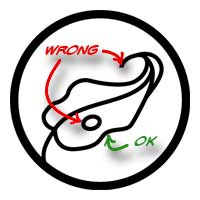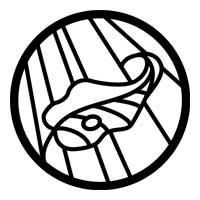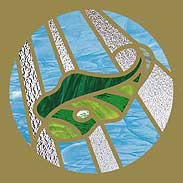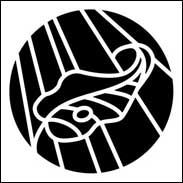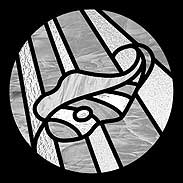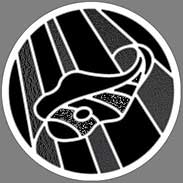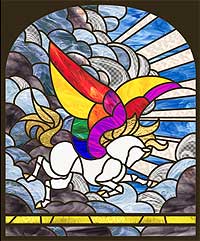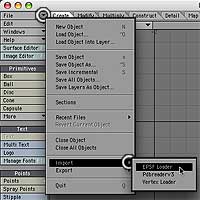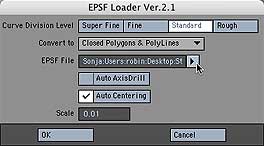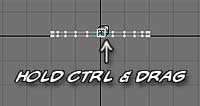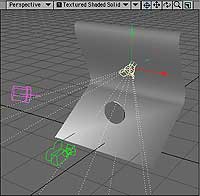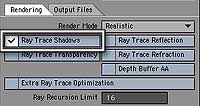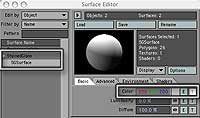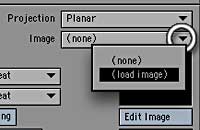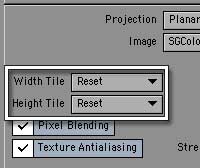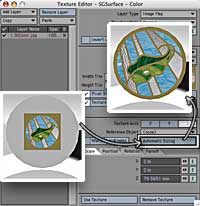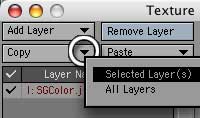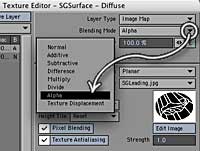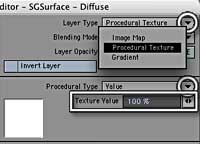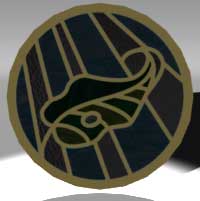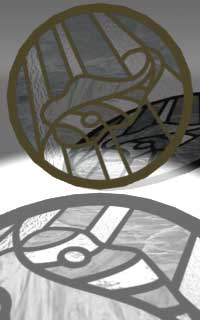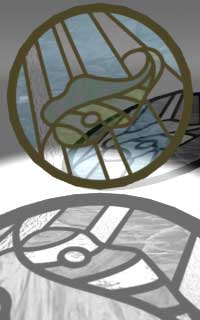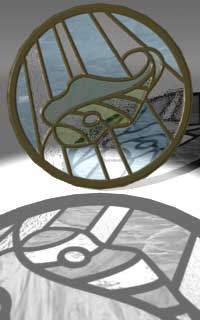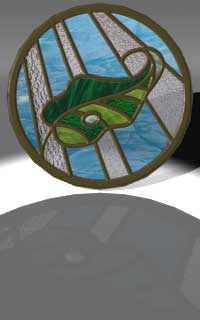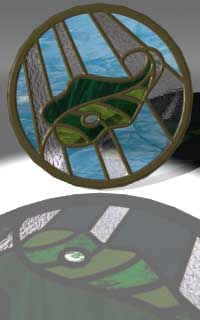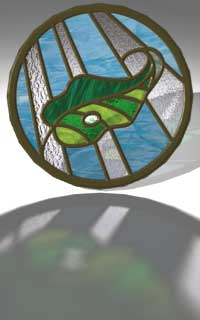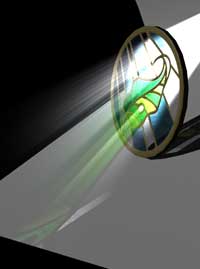
Stained glass windows are one of those things that can make an indoor scene special; but it seems that every program has its own way of doing effective stained glass.
In LightWave, it's the Color Filter setting on the Advanced tab in the Surface Editor that gives stained glass its rich hues, the ability to color everything behind it, and the colored light that makes patterns on the walls and floor when Ray Traced Shadows are used. Just put a value there, and you'll have colored glass.
However, there are tricks to making it look really good of course, and I’ve been asked to do a tutorial explaining the ones I know. So here you go!
In most cases, you won't need to model your stained glass at all; a Stained Glass Surface will fill 99.44% of your needs. Since extra polys just add to render time, don't use them if you don't have to. The entire tutorial deals with making that Surface.
To begin with, you will need an image of Stained Glass to use. You can photograph an antique window, or a window that was designed and created by someone who is willing to give you permission. You can use one of the hundreds of Stained Glass Window designs available in books, CDs, or on the web, if you have permission to do so. Or you can design it yourself.
How much work you need to do to turn that image into Stained Glass depends on how much detail you need, and whether or not the leading in your image is black. If you don't need much, and you have a good picture of your window with black leading, you can skip most of the steps, and just do the Quick and Easy Method. We'll do the other steps, and you can join us here.
